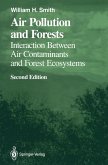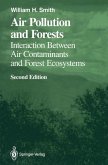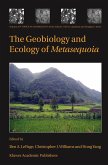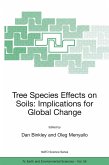This book aims to assist in choosing ecotechnological solutions for slopes that are prone to a variety of mass movements e.g. shallow failure or erosion. The book reviews the types of problematic slopes that may occur and describes briefly the nature of mass movements and the causes of these movements. There is focus on the use of vegetation to stabilize soil on slopes prone to mass movements. The book also introduces new ecotechnological methods, and case studies are discussed.
This chapter describes the processes involved in the transport of material over hillslopes. Hillslopes provide the gradients enabling material to be transported from the slopes themselves towards the valley bottoms, directly by gravity alone, or by water flowing down over the surface. Gravity has the potential to transfer material downslope if the material resistance to counteact it is insufficient. Similarly, water and wind flowing along the surface exert a drag on soil particles and have the potential to entrain material. After the gradient has fallen below a critical threshold to keep the material in tra- port, deposition occurs. Conventionally, slope processes in which gravity alone is the dominant transporting agent are called mass movements (Brunsden 1984). Processes in which other agents dominate are called erosion, e.g. wind or water erosion. Flowing water is an important transporting agent on which the emphasis is placed here. Although mass wasting is a natural process its incidence and impact may be exacerbated by human activities (Crozier 1986; Morgan 2005). A situation may ultimately arise in which human interests become unsafe or unsustainable. This impact is not only directly felt in the areas where material is removed or deposited and indirectly mass wasting may have an effect on soil and water quality in areas located further downstream. In the following sections a brief overview is given of the mechanisms, morphology, causes and consequences of mass movements and erosion.
This chapter describes the processes involved in the transport of material over hillslopes. Hillslopes provide the gradients enabling material to be transported from the slopes themselves towards the valley bottoms, directly by gravity alone, or by water flowing down over the surface. Gravity has the potential to transfer material downslope if the material resistance to counteact it is insufficient. Similarly, water and wind flowing along the surface exert a drag on soil particles and have the potential to entrain material. After the gradient has fallen below a critical threshold to keep the material in tra- port, deposition occurs. Conventionally, slope processes in which gravity alone is the dominant transporting agent are called mass movements (Brunsden 1984). Processes in which other agents dominate are called erosion, e.g. wind or water erosion. Flowing water is an important transporting agent on which the emphasis is placed here. Although mass wasting is a natural process its incidence and impact may be exacerbated by human activities (Crozier 1986; Morgan 2005). A situation may ultimately arise in which human interests become unsafe or unsustainable. This impact is not only directly felt in the areas where material is removed or deposited and indirectly mass wasting may have an effect on soil and water quality in areas located further downstream. In the following sections a brief overview is given of the mechanisms, morphology, causes and consequences of mass movements and erosion.








